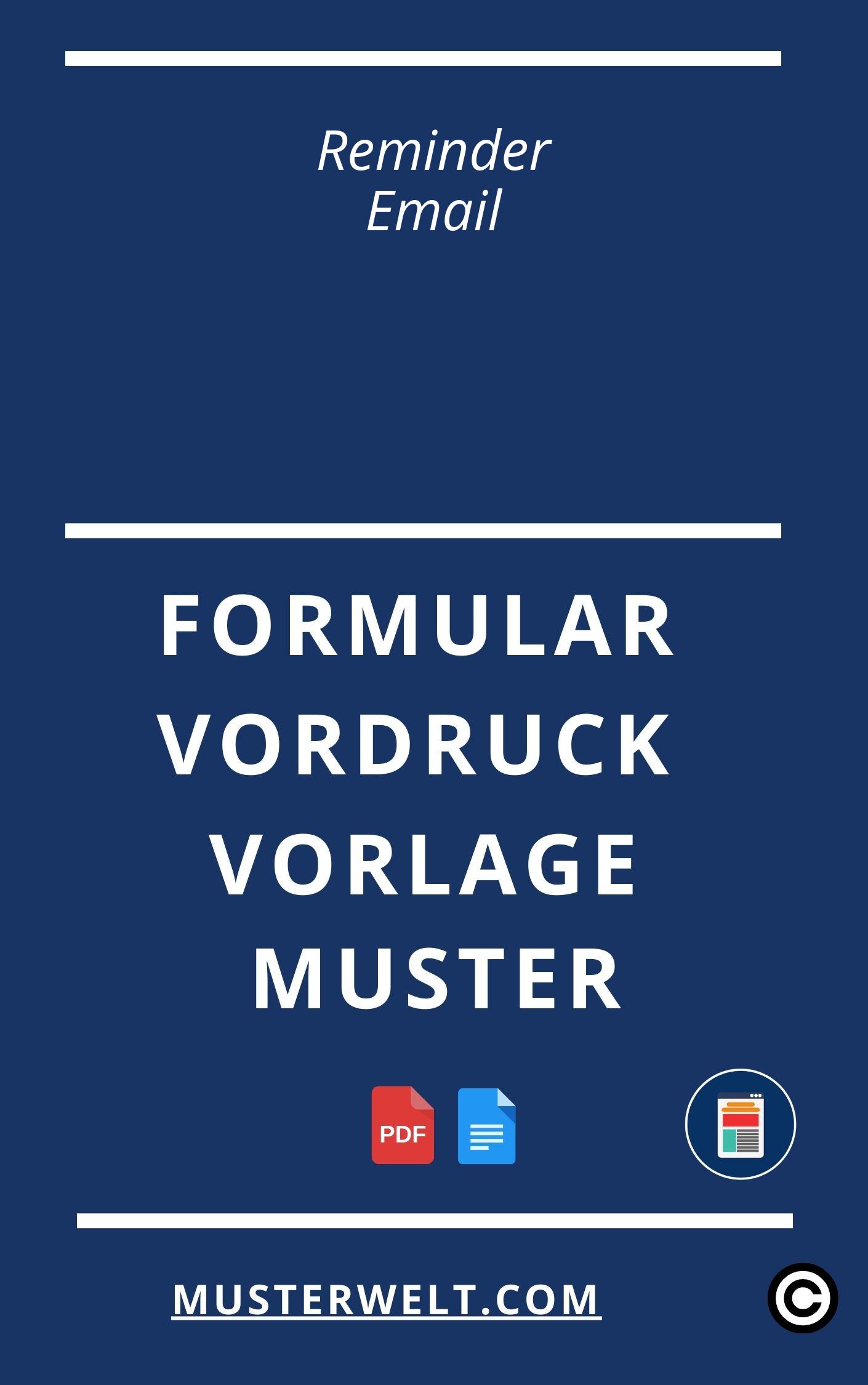Vorlage und Muster für Reminder Email zur Anpassung und Erstellung – Öffnen im WORD– und PDF-Format

Vorlage Reminder Email
Sehr geehrter [Name des Empfängers],
ich möchte Sie freundlich daran erinnern, dass [Details des Termins, der Veranstaltung oder der Aufgabe]. Der Termin steht kurz bevor und es ist wichtig, dass Sie sich darauf vorbereiten und pünktlich erscheinen/abliefern.
Bitte planen Sie ausreichend Zeit ein, um sich vor dem Termin vorzubereiten und sicherzustellen, dass Sie alle notwendigen Materialien oder Unterlagen zur Verfügung haben. Sollten Sie weitere Informationen benötigen oder Fragen haben, stehe ich Ihnen gerne zur Verfügung.
Es ist wichtig, dass Sie diesen Termin ernst nehmen und Ihre Anwesenheit bestätigen. Sollten Sie aus irgendeinem Grund nicht in der Lage sein, am Termin teilzunehmen oder die Aufgabe abzuschließen, bitten wir Sie, dies so früh wie möglich mitzuteilen.
Wir möchten sicherstellen, dass alle Termine und Aufgaben reibungslos ablaufen und halten es für wichtig, dass alle Beteiligten rechtzeitig informiert und vorbereitet sind.
Vielen Dank im Voraus für Ihre Aufmerksamkeit und Ihr Engagement. Wir freuen uns auf Ihre Teilnahme/am erfolgreichen Abschluss der Aufgabe.
Mit freundlichen Grüßen,
[Ihr Name] [Ihre Kontaktdaten]
Vorlage und Muster für Reminder Email zur Erstellung und Anpassung im WORD– und PDF-Format
Mehr Vorlage und Muster für Reminder Email
| Reminder Email |
| PDF – WORD Format |
| Bewertung: ⭐⭐⭐⭐⭐ 4.12 |
| Ergebnisse – 801 |
FAQ Reminder Email
Dear [Name],
We hope this email finds you well. We want to provide you with some important information regarding frequently asked questions (FAQ) about writing and including various elements in your documents. Below, we have compiled answers to 12 commonly asked questions.
Frequently Asked Questions:
- How do I write an effective introduction?
To write an effective introduction, it is important to grab the reader’s attention with a compelling opening sentence or a thought-provoking question. Provide a brief overview of the topic and clearly state your thesis or main argument.
- What elements should be included in a well-structured essay?
A well-structured essay should include an introduction, body paragraphs that support your thesis with evidence, and a conclusion that summarizes your main points and leaves a lasting impression on the reader.
- How do I format my document properly?
To format your document properly, use a legible font, appropriate font size, and consistent spacing. Align your text to the left and use headings, subheadings, and bullet points to organize your content.
- What are some tips for effective proofreading?
When proofreading, take your time and read your document carefully. Check for spelling and grammar errors, consistency in tense and formatting, and clarity of your ideas. It can also be helpful to have someone else review your work.
- Why is it important to cite sources in academic writing?
Citing sources is important in academic writing to give credit to the original authors and to allow readers to verify and explore your research further. It also helps you avoid plagiarism.
- What is the difference between MLA and APA citation styles?
MLA (Modern Language Association) and APA (American Psychological Association) are two common citation styles. MLA is often used in humanities subjects, while APA is commonly used in social sciences. Pay attention to the specific guidelines for each style in terms of in-text citations and reference lists.
- How do I write a convincing argument in my essay?
To write a convincing argument, present clear and logical reasoning supported by evidence. Address counterarguments and provide rebuttals to strengthen your argument. Use persuasive language and appeal to the emotions and values of your audience.
- What are some common mistakes to avoid in academic writing?
Common mistakes to avoid in academic writing include using vague or imprecise language, relying heavily on quotations, neglecting to proofread, and neglecting to cite sources properly.
- How do I organize my research notes?
Organize your research notes by creating a system that works for you. Consider using headings, subheadings, color-coding, or digital tools such as note-taking apps or spreadsheets. Make sure to include bibliographic information for each source.
- What is the purpose of an abstract?
An abstract is a concise summary of a research paper or article. It provides readers with an overview of the study’s objectives, methods, results, and conclusions. The abstract helps readers decide whether the full paper is worth reading.
- How do I write a professional email?
To write a professional email, start with a clear and concise subject line. Use a formal tone, address the recipient appropriately, and be mindful of grammar and spelling. Keep the email focused and include all necessary information.
- What are some strategies for time management when writing a research paper?
When writing a research paper, it is important to plan your time effectively. Break the task into smaller, manageable chunks, create a schedule, and set deadlines for each stage of the writing process. Avoid procrastination and utilize tools such as time management apps or techniques like the Pomodoro Technique.
We hope these answers to frequently asked questions have been helpful to you. If you have any further inquiries, please do not hesitate to reach out to us. We are here to support you in your writing journey!
Best regards,
[Your Name]